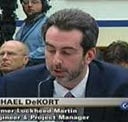As with most AV makers using public shadow driving to create these systems there is nothing safe about this. Not in the long term nor short. This information is hype, misleading and providing the public, press, governments etc false confidence. And Starsky adds the extra issue of remote controlling their vehicles.
It is not remotely possible, as in IMPOSSIBLE, to get anywhere near creating a legitimate autonomous vehicle using public shadow driving as your primary approach to training and testing AI. It is impossible to drive the one trillion miles or spend over $300B to stumble and restumble on all the scenarios necessary to complete the effort. Many of which are accident scenarios no one will want you to run once let alone thousands of times. You also cannot survive the thousands of needless casualties you will create trying. And finally, as the public, press and soon governments are figuring out, handover cannot be made safe for most complex scenarios, by any monitoring and notification system, because they cannot provide the time to regain proper situational awareness and do the right thing the right way.
The Crash of the Autonomous Vehicle Industry
Beyond this is Starsky’s use of remote control.
While a system like that can work the use cases are extremely small. Much smaller than the practice is being used for here. There are two fundamental problems. Latency, especially round trip, and not using a full motion simulator.
Regarding latency. Vehicles at speed or making quick lateral movements require extremely low levels of latency. Something you cannot get using public networks. No mater how many you use in parallel. The problem will manifest itself as a runaway delay loop that will get worse as the thread continues.
With regard to needing a full motion simulator. In many cases the driver has to get motion cues or experience the lack of them to drive properly, especially when there is a loss of traction. The systems AV makers use don’t do either of these properly in house let alone through a network across country. As an example you cannot have more than 16ms delay to the visual, motion or control loading systems in a simulator. You cannot get that performance round trip using cellular or other public networks. (And do not quote me bandwidth or “speed” numbers. The issue is how long data takes to get from when the wheel is moved through the network through the vehicle systems and back. And that has to be at 99.99% data transmission accuracy. Meaning no packet or data retransmissions. If that is needed you need to double the speed for each retransmission needed.)
